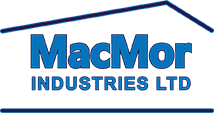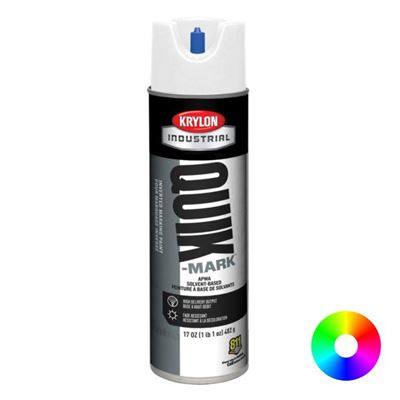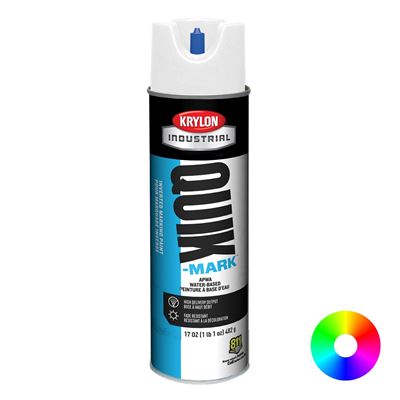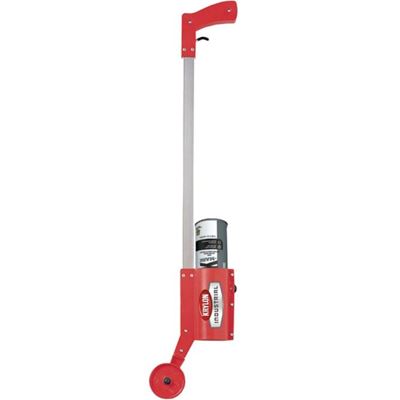This page contains; Water-Based vs. Solvent-Based Paint, Identifying Hazards by Colour, Why Quality Marking Paint is so Important, The Krylon Industrial Quik-Mark™ Advantage, and How to Properly Use Krylon Industrial Quik-Mark
What You Need to Know About Marking Paint
Welcome back to Feature Friday! This week we’re exploring the topic of marking paint. With construction season in full swing, it is increasingly important to ensure marking lines are done properly with paint that is both reliable in colour and resistant to the elements.
Water-Based vs. Solvent-Based Paint
When assessing your marking paint needs, one of the first things to consider is whether your application would be best suited for water-based paint or solvent-based paint.
The main difference between the two is that water-based paint uses water as the bonding agent, while solvent-based paint involves more chemicals. Contrary to popular belief though, water-based doesn't mean water-soluble, and whether you choose a solvent-based or water-based marking paint, both will hold up for almost the same amount of time. The rise of environmental regulations in the late 80s and early 90s surrounding solvents and volatile aerosols resulted in an industry shift towards more compliant paint products which contributed to the rise of water-based paints.
Water-Based
Pros:
- Better for the environment; lower VOC (volatile organic content)
- Minimal odor
- Less flammable
- Quicker dry time
Cons:
- Dry times impacted by temperature and humidity
- Less tolerant of the application environment
Solvent-Based
Pros:
- Greater sticking power; more permanent
- Cures in cold temperatures and is more tolerant to environmental impacts
Cons:
- High VOC (volatile organic compound)
- Flammable
- Requires solvent to remove
Identifying Hazards by Colour
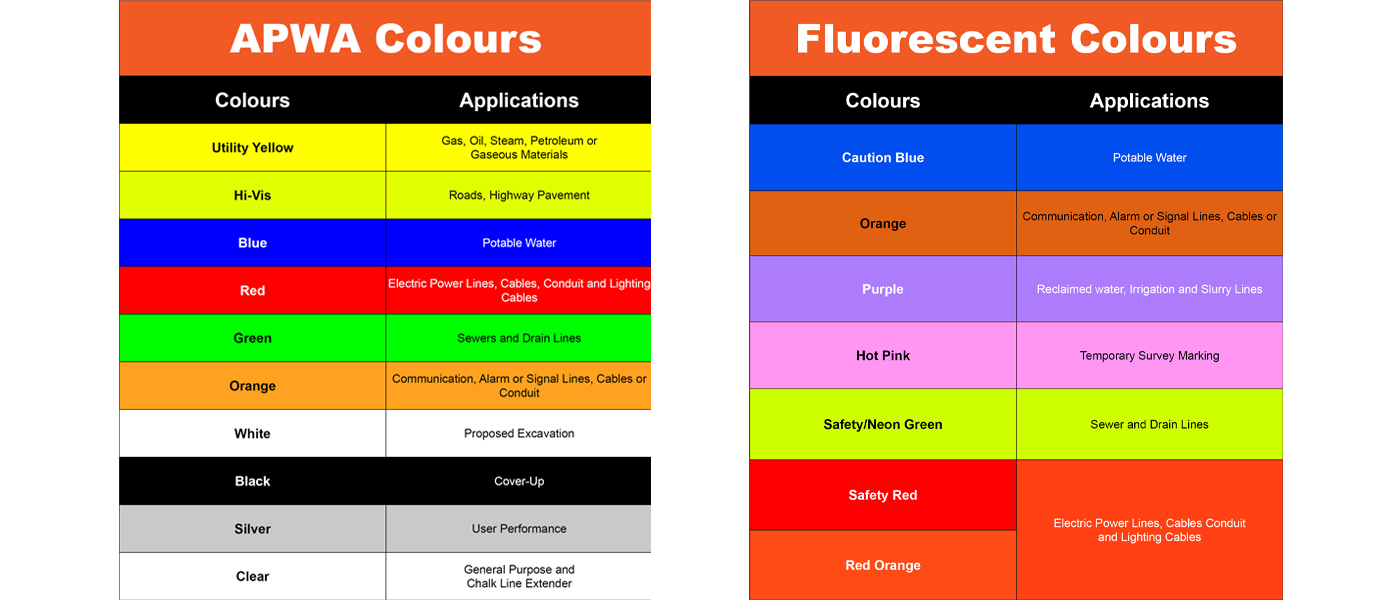
Why is Quality Marking Paint So Important?
Saving a few dollars on a can of paint seems like a good idea in the short term. However, there are many factors that could end up costing more down the line if the marks don't last or are changed by exposure to UV.
Suppose you use a discount brand marking paint. While the quality of the mark could seem good enough for the price, most marking paints struggle to deliver the ideal line size (2" width) on the first pass. Weak output from the can (especially on windy days) means markers will have to make multiple passes to ensure the mark is done properly. This hassle decreases productivity and adds unnecessary delays to projects.
Another reason the quality of your marking paint is so important is the potential safety hazards that could arise from faded lines. A yellow line (gas, oil, steam, petroleum etc.) that is exposed to the elements could fade to white (proposed excavation) in a matter of days depending on the environment. Not only can this put workers at risk, it can also cause delays to the project if marks need to be reassessed and repainted.
The Krylon® Industrial Quik-Mark™ Advantage
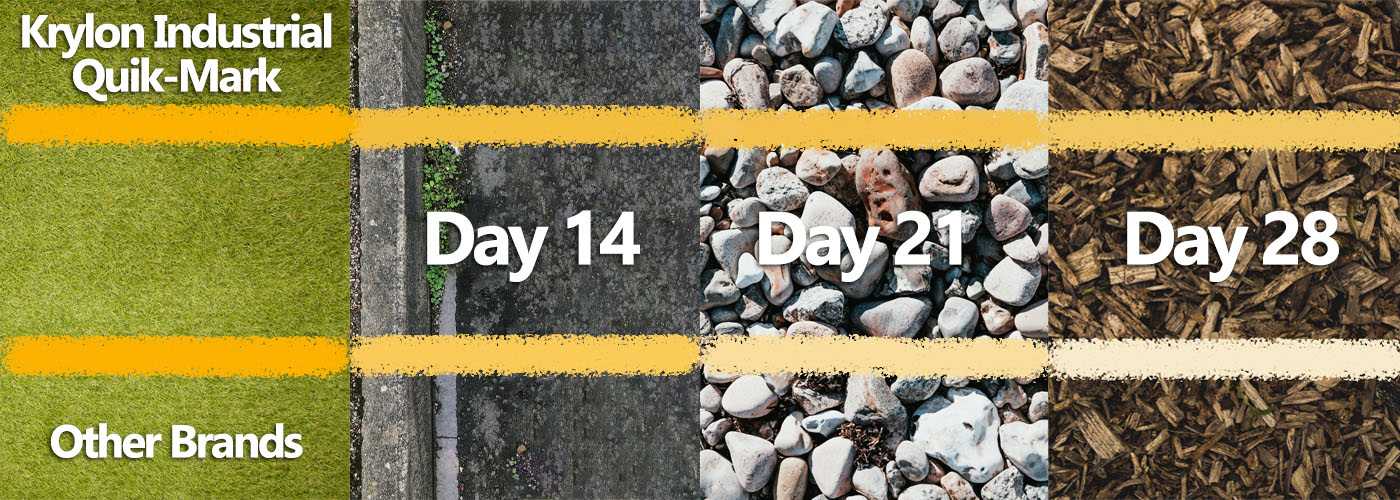
Available in both water and solvent-based formulas, Krylon Industrial Quik-Mark marking paint has become a staple for markers in many industries. Quik-Mark is made up of an advanced, UV-resistant, fast-drying formula that contains no fillers such as barium sulphate or limestone.
According to the American Public Works Association (APWA), the ideal size for a locating line is 2” in width and between 18 – 24” in length. Krylon Quik-Mark features a larger tip size (.044 mm), allowing you to get a proper line down on your first pass compared to other marking products out there with tip sizes around .022 – .032mm.
The larger tip is both non-clogging and easy to clean, making it convenient to use for new markers and veterans alike. Krylon's Glove Grip™ cap also provides a 50% larger trigger area than most other marking paint cans in the market, which ensures workers can use the product effectively without needing to remove their work gloves. Lastly, Quik-Mark boasts a 30-Day fade-free formula that ensures lines remain visible and does not fade into other colours.
How to Properly Use Krylon Industrial Quik-Mark
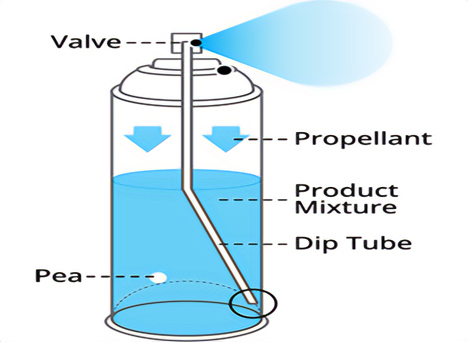
To ensure your Krylon spray cans are ready for your next job, it's important to know how to properly use and care for them after every job.
Generally speaking, you would normally shake an aerosol can to loosen a pea inside to mix the paint. What most people don't realize is that loosening this pea is only just the first half to properly mixing the paint. After shaking the pea loose, you then have to stir the can for about 30 seconds. You should hear the pea rolling around the bottom of the can. This is to dislodge any solid paint particles that settled at the bottom of the can and ensures the entire product within the can is mixed properly.
To clear out any paint within the tube after you finish spraying, a quick tap on the valve while directing the can away from you should suffice.
Contact Us
If you or your crew are in need of Marking Paint, please do not hesitate to contact us. One of our safety specialists would be more than happy to help you out.
